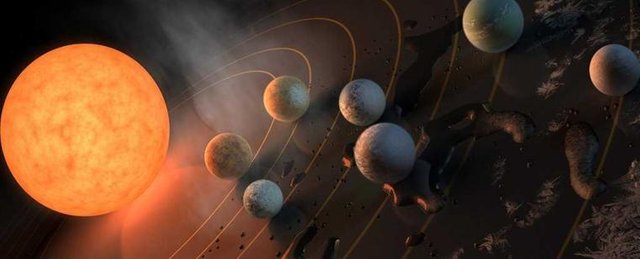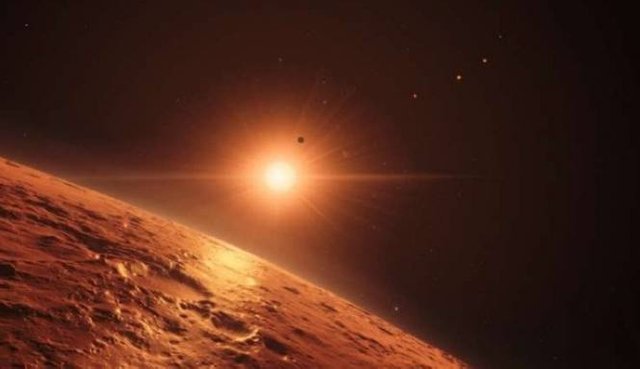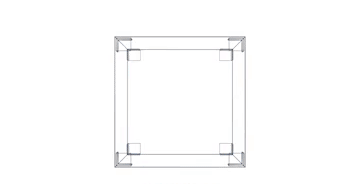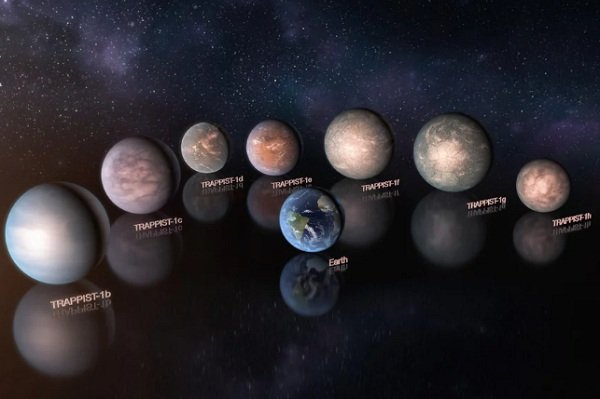TRACING THE EXOPLANET HABITABLE POTENTIAL IN THE STAR TRAPPIST-1

A year ago, 7 exoplanets were found circling star of TRAPPIST-1 only in the distance of Mercury to the Sun. The seven medium-sized planets are suspected of having a resemblance to Earth. To that end, astronomers made observations to find out the exoplanet's habitable potential in the star TRAPPIST-1. As a result, three of the seven exoplanets in the TRAPPIST-1 star are potentially habitable and water-abundant.
TRAPPIST-1 star is a cool red dwarf star. Therefore, although the exoplanets surrounding these stars are at close proximity, the temperatures are also warmer than those around the Sun-like stars at the same distance. Among the 7 exoplanets (TRAPPIST-1 b, c, d, e, f, g and h), three of which are in the habitable zone.
The question is, can the seven Earth-sized planets similar to Earth have water to support the formation of life?

Planet Earth or Neptune Mini?
To find out, astronomers led by Julien de Wit from Massachusetts Institute of Technology, USA, made observations using NASA / ESA's Hubble Telescope. Observations were made to study the atmosphere of the 4 exoplanets present in the system, TRAPPIST-1d, e, f and g. Of the 4 exoplanets, 3 of them are in the habitable zone while TRAPPIST-1d is on the edge of the habitable zone. In the Solar System, this position is occupied by Venus and as we know, Venus is unable to support life. The existence of planets in the habitable zone becomes an initial requirement for the planet to have a warm enough temperature so that if there is water on the surface, the water will remain in the form of liquid. Not gas or ice. Observations were made to observe the transit of 4 exoplanets. When the planet transits or passes in front of the star, astronomers make measurements on the infrared light of a star that passes through the planet's atmosphere and eventually arrives on Earth. What is sought is the atmosphere that has abundant hydrogen.Why hydrogen?
Hydrogen gas is a greenhouse gas that causes the planet is unable to support the formation of life, especially on the inner planets close to the host star. But, for outer planets far from the host star, the presence of hydrogen gas actually makes them potentially habitable. The lack of hydrogen in the atmosphere is one indication of the planet is a planet earth.
From the observations, was found atmosphere in the exoplanets d, e, and f, do not show hydrogen fingerprints and indicate that the three exoplanets are minim of atmosphere. It can thus be concluded also that TRAPPIST-1 d, e, and f are not exoplanets of Neptune-like gases. But not so with TRAPPIST-1g. It could be that this exoplanet has an atmosphere rich in hydrogen. For the outer planets, it is suspected there is an abundance of hydrogen as well as in the atmosphere of Neptune in the Solar System.
Julien de Witt and the team have also made observations on two inner planets in the TRAPPIST-1 system. Planets b and c close to the star exhibit similar fingerprints that there is no abundance of hydrogen in the atmosphere.
But, it's just hydrogen. Of course the exoplanet atmosphere in the TRAPPIST-1 system is still very diverse but not yet ascertained by the Hubble Telescope. Further observations with James Webb's telescope or other new-generation telescopes will reveal the existence of heavy elements such as carbon, methane, water, and organic compounds that can be an indication of life.

However, the lack of hydrogen in the exoplanets third gives another indication of the history of planetary formation in TRAPPIST-1. The seven planets in the TRAPPIST-1 system are known to have regularity while orbiting their parent stars. For example, when the planet TRAPPIST-1h (outermost planet) completes its two orbits around the parent star, the other six planets, g, f, e, d, c, b, have also completed 3, 4, 6, 9, 15, and 24 orbits around TRAPPIST-1 stars.
Planets do not form that way. In general, planets that form more like amateur musicians (who are just learning) who are collaborating to play music, Irregular. Therefore, it is suspected that exoplanets in the TRAPPIST-1 system are formed in areas far from the star and migrate into the system. When migrating, the 7 exoplanets interact with the gaseous disks and dust around the star before it stabilizes as now and have regularity in terms of inter-planetary orbital resonances.
Exoplanet in the TRAPPIST-1 system is also thought to have an abundant atmosphere with hydrogen when it is formed. But the hydrogen is then released as the planet moves closer to the star as it migrates.
Water Hunting in TRAPPIST-1

Separate observations were also made by Simon L. Grimm of the University of Bern, Switzerland and a team to study the characteristics of exoplanets in the TRAPPIST-1 system. The Observation was done with ESO's SPECULOOS survey telescope at Paranal Observatory, Chile, the Sptitzer Telescope, and NASA's Kepler Telescope. The goal is to know the mass and density of the planet with a level of accuracy better than ever.
How to? The key is in the resonance of the seventh planets of the TRAPPIST-1. When the exoplanet, which is close to each other, travels around the parent star, there are times when they cross each other. As a result there is a gravitational disturbance that results in a shift in transit time as the planet passes in front of the star. It should be remembered that the shift in transit time is also influenced by mass, distance from stars, radius, average density and planetary gravity. Therefore, astronomers studied the transit 284 data obtained from SPECULOOS, Spitzer and Kepler observations.
As a result, the density of planets in the TRAPPIST-1 system ranges from 0.6 to 1 Earth density and the entire exoplanet is composed of rocks.
Of the seven planets, only TRAPPIST-1e has an overall composition of rock. The other six exoplanets (b, c, d, f, g, and h) would potentially have water up to 5% of the planet's mass or 250 times more than the Earth's oceans. The water can be in the form of gas, liquid, or ice. This can be seen from the position of the planet as well.
Reference :

BEST REGARD @alf4t1h



How far away is this system?
TRAPPIST-1 distance from Earth is 39 light years (12 parsecs; 370 petameters) in the constellation of the iarius
Outch! It's not the next door! Me who wanted to spend my holidays there ;)
Interesting article, I love space!